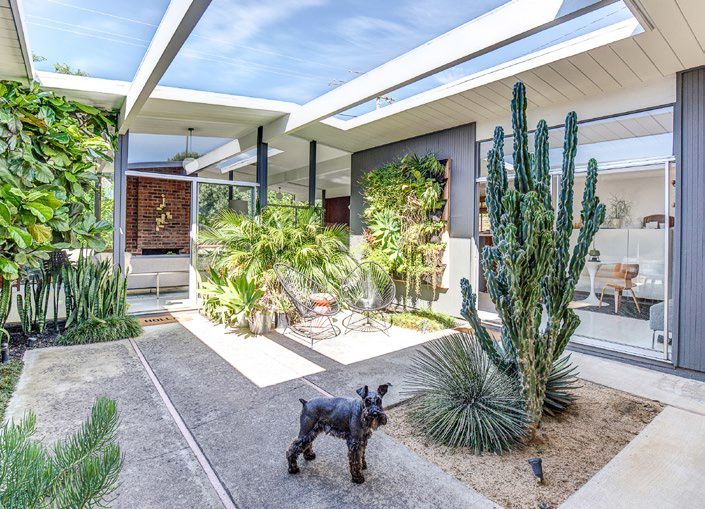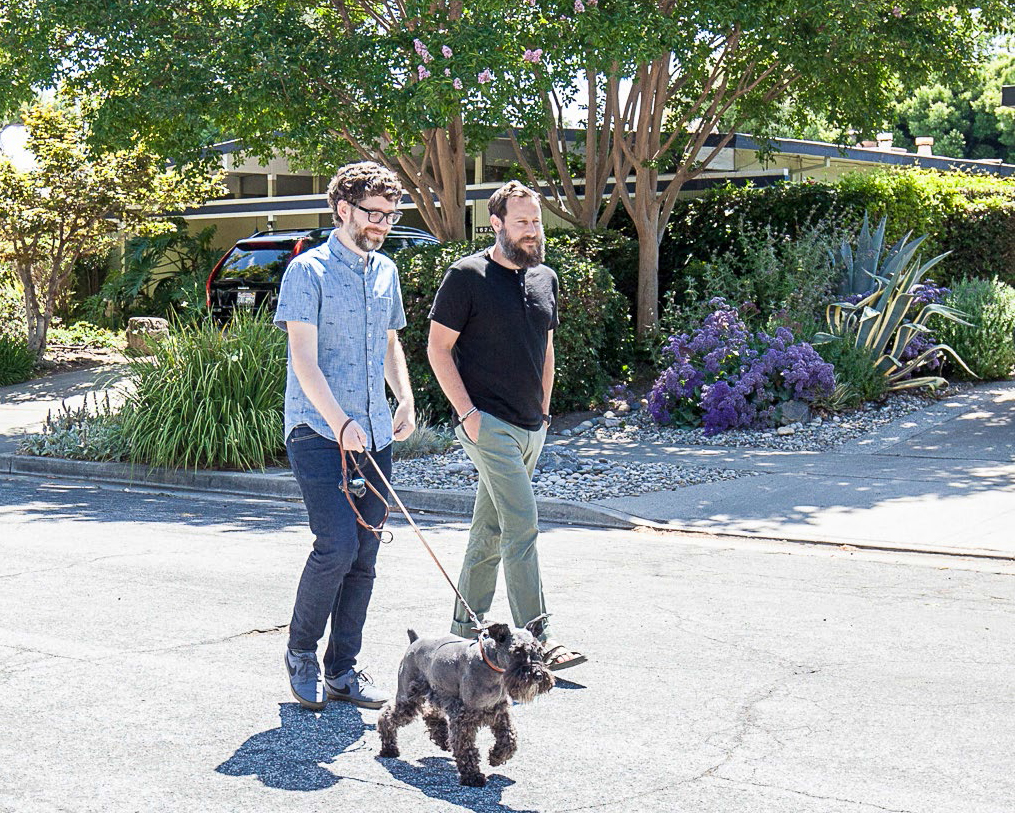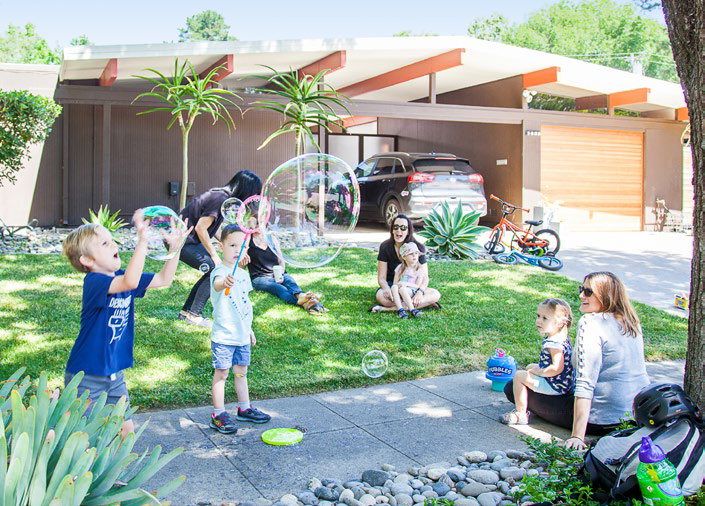Razing the Roof - Page 2
 |
 |
|
|
 |
|
|
 |
|
|
Crowds and liability concerns led to its demise in the mid-1990s. But what didn't die was the spirit behind the event. Neighbors have since been producing neighborhood- and friends-only block parties, periodic home tours, their annual Joey Awards (named for Joe Eichler, of course) for best home and garden renovations, Christmas caroling, and more.
Many younger residents speak with affection of their older neighbors and of the homeowners who came before them, many of whose contributions are still remembered.
One such is Loni Nagwani, a former resident and community leader. Among the accomplishments for which she is still remembered is an Eichler she restored—by removing a pitched-roof attic added by the previous owner.
That was a costly and remarkable thing to do at the time—and it has inspired copycats. Jeff Stowe, a 24-year resident, described several subsequent attic-removal projects—including a recent one, which preceded the home quickly going on the market.
Among the owners who've removed attic aberrations is Xavier Cohen and his wife, Annabel. They found an Eichler for sale that required much work. Xavier loved it—except for the attic.
"I was like, "Aauugghhh!," he says. The attic, at its peak, loomed ten feet above the original roofline, and had a skylight that provided a sort of tunnel of light into the atrium.
His realtor, Mark Easterday, "told me it would cost $13,000 to remove it, so when we did the offer I removed $13,000 in the price, because for me, that was not part of the house. Mentally, for me, I cannot purchase something I don't like. So we removed it."
Xavier says he was inspired by Nagwani's attic removal. "That's why I knew it was possible, because somebody did it," he says.
Jeff noted that several attic additions still remain, but he adds, optimistically, "When those [homes] turn over, the new owners will probably take those pitched roofs off."
When the National Register proponents listed homes that 'contribute' to the tract's historical value by retaining their original feeling, they adopted a more forgiving standard than that used a decade and a half earlier by the Historic Quest committee that got the Palo Alto tracts listed.
Historic Quest, for example, did not accept homes with second-story additions or attics as contributors. The Fairglen surveyors did—if they decided the home retained its essential character.
"Because we were creating a historic district, the individual homes don't have to be so pristine, because they build off each other," Sally Zarnowitz, the architect who lives in the neighborhood and wrote the nomination, says. "They create a whole."
She also noted that attics, and perhaps even some second-story additions, can be removed—as events have been proving.
But the era when Eichler homes were regularly desecrated is not entirely in the past. One homeowner recently added such an attic roof to their home—which did not go over well with some neighbors.
It brings pleasure to some old-timers that among the greatest proponents of Eichler preservation are young people who grew up in the tract.
Mark Pfahnl, 27, backed the National Register effort because he was seeing small, older homes in a nearby non-Eichler neighborhood being replaced by McMansions. He feared the same thing would happen in Fairglen.
"That's why we did the historical thing," he says. "We want people to have a good, hard think about doing what the people two doors down did—the big, ugly pitched roof [attics]."
His friend and neighbor, Ella Garfunkel, a young woman who also grew up in the neighborhood, shuddered over one recent remodel.
"Next door they bought the house, and then they redid the whole interior. It was all original. They took everything out. Everybody on the block was so upset."
"We talk about it, and we care about it," she says of preserving the homes.
Newcomers to this tract in Silicon Valley tend to work for tech firms, and their impact on the neighborhood, says longtime resident Jerry Escobar, has been "positive, very positive."




